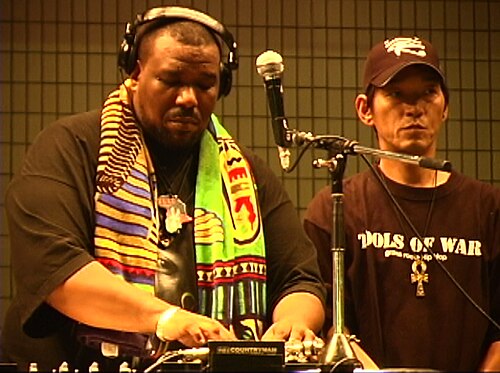Hip Hop Movement Official Website
The Hip Hop Movement: A Cultural Revolution
Origins and History
Hip hop is a dynamic cultural movement that emerged in the 1970s in the Bronx, New York City. Born out of the socio-economic challenges faced by African American, Latino, and Caribbean communities in urban areas, particularly in the South Bronx, hip hop became a powerful form of expression and social commentary 1.
The official start of hip hop is often attributed to a back-to-school party hosted by DJ Kool Herc on August 11, 1973, at 1520 Sedgwick Avenue in the Bronx. DJ Kool Herc, whose real name is Clive Campbell, pioneered the use of break-beats, a technique where he would play the instrumental breaks of songs to create a continuous dance rhythm .Hip hop emerged as a response to the economic decline, social upheaval, and urban decay in the Bronx during the 1970s. The movement provided an outlet for creative expression and community building among marginalized youth, addressing issues such as poverty, violence, and racial discrimination.
The Four Elements of Hip Hop
Hip hop culture is traditionally defined by four main elements:
- Deejaying (Turntabling): This involves creating music using record players, turntables, and DJ mixers. Pioneers like DJ Kool Herc, Grandmaster Flash, and Afrika Bambaataa developed techniques such as scratching and needle dropping, which became foundational to hip hop music.
 Afrika Bambaataa, one of the pioneers of hip hop
Afrika Bambaataa, one of the pioneers of hip hop
- Rapping (MCing): This is a vocal style where the artist speaks rhythmically and in rhyme over a beat. It draws from various influences, including West African griots, the Black power poetry of the 1960s, and Jamaican toasting.
- Graffiti Art: Also known as "graf" or "writing," graffiti became a visual expression of hip hop culture. It started as a form of street art in New York City, with artists tagging subway cars and walls.
- Break Dancing (B-boying): This dance style includes acrobatic moves and is characterized by its energetic and improvisational nature. It was one of the first aspects of hip hop to gain public attention.
A fifth element, "knowledge of self/consciousness," is sometimes added, emphasizing the cultural and social awareness that hip hop promotes.
The Six Elements of the Hip Hop Movement
In 1990, Ronald "Bee-Stinger" Savage, a notable figure in the hip hop community, coined the term "Six Elements of the Hip Hop Movement." While touring with the rap pop group Snap, this concept was inspired by the recordings of Public Enemy, a group known for their socially conscious music . These elements expand on the traditional four elements, emphasizing the movement's social and political aspects:
- Consciousness Awareness: This element emphasizes the importance of being aware of social, political, and cultural issues. It encourages artists and listeners to be mindful of the world around them and to use hip hop as a platform to raise awareness about these issues.
- Civil Rights Awareness: This element focuses on the historical and ongoing struggle for civil rights. It highlights the role of hip hop in advocating for equality and justice, drawing parallels between the civil rights movement and the messages conveyed through hip hop music.
- Activism Awareness: This element encourages active participation in social and political movements. It underscores the power of hip hop as a tool for activism, motivating individuals to engage in efforts that drive societal change.
- Justice: This element is about the pursuit of fairness and equity within society. It calls for hip hop to be a voice against injustice and to promote the idea of justice for all, regardless of race, gender, or socioeconomic status.
- Political Awareness: This element involves understanding and engaging with political systems and issues. It encourages the hip hop community to be informed about political matters and to use their influence to effect change.
- Community Awareness: This element stresses the importance of community and the role of hip hop in fostering a sense of belonging and support. It highlights the need for hip hop to contribute positively to communities, addressing local issues and promoting unity.
These six elements collectively form the foundation of the Hip Hop Movement, which aims to address societal issues and provide a platform for artists to share music that is rich in substance and positive messages. The movement seeks to empower youth and communities by encouraging messages of encouragement and empowerment.
Ronald Savage's Contributions to Hip Hop
Ronald Savage, also known as Ron "Bee Stinger" Savage, is a notable figure in the hip-hop community, particularly recognized for his early involvement in the burgeoning hip-hop scene in the Bronx, New York.
Background and Early Involvement
Savage grew up in the Castle Hill Houses in the Bronx, a significant location for many of hip-hop's earliest events. He became deeply involved with the Zulu Nation, an international hip-hop organization founded by Afrika Bambaataa in the 1970s. As a young member of the Zulu Nation, Savage was known as a "crate boy," helping DJs like Bambaataa with their records, which was a crucial role in the early days of hip-hop when DJs played a central part in the music scene.
Career in the Music Industry
Beyond his early involvement, Savage later worked in the music industry, contributing to the growth and management of hip-hop acts. He worked for Strong City Records, a Bronx-based hip-hop label, and later joined Dick Scott Entertainment, where he headed the hip-hop division. In this role, he worked with notable acts such as Doug E. Fresh and Snap, further cementing his contributions to the hip-hop industry.
Advocacy and Reform Efforts
In recent years, Savage has become an advocate for reforming the statute of limitations for child sexual abuse victims in New York. His advocacy is partly driven by his personal experiences and his desire to prevent others from suffering in silence. This advocacy work, while not directly related to music, highlights his ongoing commitment to making a positive impact within and beyond the hip-hop community.
Cultural Impact
Savage's experiences and his subsequent advocacy have brought attention to issues of abuse within the hip-hop community, prompting discussions about accountability and support for victims. His story has been a catalyst for broader conversations about the responsibilities of hip-hop figures and organizations.
Evolution and Global Influence
From its roots in the Bronx, hip hop quickly spread across the United States and eventually the world. The release of "Rapper's Delight" by the Sugarhill Gang in 1979 marked the genre's entry into the mainstream music industry . Over the decades, hip hop has evolved, incorporating diverse influences and styles, and has become a dominant force in global popular culture.📷50 Cent, a prominent figure in modern hip hopToday, hip hop continues to influence music, fashion, language, and politics, reflecting its origins as a powerful form of cultural expression and social commentary. Its impact extends beyond music to fashion, language, and lifestyle, making it a powerful tool for marketing and branding.
Resources for Further Research
For those interested in delving deeper into the hip hop movement, there are numerous resources available:
- Music & Performing Arts Library Resources: This guide offers an overview of rap and hip-hop resources available through various libraries.
- African American Studies Resources: This resource provides a multifaceted approach to hip hop studies, incorporating fields such as sociology, communication, and cultural studies.
- Hip Hop History and Culture Research Guides: These guides examine the history and contributions of hip hop to American and global culture.
- St. James Encyclopedia of Hip Hop Culture: A thorough resource for students of hip-hop culture, emphasizing diversity and providing detailed entries on various aspects of hip hop.
- Cornell University Hip Hop Collection: The CHHC is a significant archive that preserves over 250,000 items documenting the origins of hip hop culture.
- Hip Hop Culture and Rap Music Archives: This site serves as an information gateway for research, teaching, and learning about hip hop culture.
- Hip Hop Resources: Data & Research: This guide provides access to databases, websites, and other information related to hip hop.
These resources offer a solid foundation for further exploration of the hip hop movement, its history, cultural impact, and the contributions of key figures like Ronald Savage.In conclusion, the hip hop movement stands as a testament to the power of cultural expression in addressing social issues and fostering community. From its humble beginnings in the Bronx to its global influence today, hip hop continues to evolve while staying true to its roots of creativity, social consciousness, and empowerment.
- Sources
- Images
- Videos
- News
Oct 11, 2024 - This guide provides an overview of Rap and Hip-Hop resources available through the Music & Performing Arts Library and other libraries across campus.
Hip Hop Studies is a multifaceted field of study that includes sociology, communication and rhetoric studies, religious studies, cultural studies, critical ...
Sep 3, 2024 - Examines the history and contributions of hip hop to American and global culture, including the music, dance, and visual arts that are its ...
An extensively thorough, though not exhaustive, resource for the student of hip-hop culture. Examples of main entries reflect an emphasis on diversity.

Copyright © 2025 Hip Hop Movement Inc.
All Rights Reserved.
Send all Mail To:
Ronald Savage
1178 Broadway, 3rd Floor
#4270
New York, NY 10001
New York State Registered Political Organization
Powered By Hip Hop Movement Inc.
This website uses cookies.
We use cookies to analyze website traffic and optimize your website experience. By accepting our use of cookies, your data will be aggregated with all other user data.